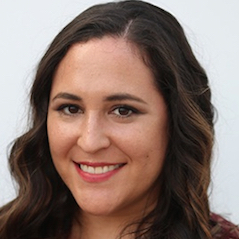15 minutes
Credit union and industry leaders discuss the top areas of concern that keep them up at night.
One of the toughest things about being a leader in the credit union space is that there are always challenges to face, and they’re constantly evolving.
“Since the beginning of the credit union movement in 1934, the industry has stood the test of time and has navigated every economic downturn, decline and recession,” says CUES member and board director Mark L. Robnett, CCE, president/CEO of $924 million Justice Federal Credit Union, Chantilly, Virginia. “In today’s world, one thing is certain: uncertainty, a status that has emerged as the defining characteristic of our age. For decades, much of the world enjoyed relatively steady economic and social gains. But today, this economic logic is being upended.”
The pandemic, coupled with econominc turmoil and geopolitical instability, has created more uncertainty in the industry than ever before. The Great Resignation brought recruiting and retention challenges, and we’ve seen record mortgage demand and record-high increased deposits in the first years of COVID-19. “However, [the pandemic] has also influenced a 40-year high inflation, rising interest rates and a more than probable recession,” Robnett says. “In this increasingly uncertain world, leaders must learn how to navigate simultaneous crises. Excelling in turbulent times requires the ability to pivot, prioritize, work at pace, and provide a clear and compelling vision to move forward with purpose and strength.”
Challenges like these make financial services a highly competitive industry sector. “It is ever-changing due to economic and political trends; the changing needs and behaviors of consumers and businesses; advances in technology; regulatory pressures and changes; and the continuous entry of new players or competitors,” says Mark Sievewright, founder of Sievewright & Associates, Boston, a Strategic Resource Management company. “Change is constant for credit union leaders and a key determinant of success continues to be the ability for credit unions to adapt and change their respective strategies and the initiatives that support them.”

Top areas of concern are always shifting and evolving for credit union leaders, says Onker Basu, senior director at CUESolutions provider Cornerstone Advisors, Scottsdale, Arizona, so it’s important for the board to regularly and carefully consider their priorities and how they want to emphasize them.
To find out what’s on the minds of credit union leaders lately, CUES sends an annual Readex Research survey to members and subscribers asking them to identify their top three hurdles. In 2022, the CUES community’s top 10 responses were:
- Staffing/hiring/retention
- Cybersecurity
- Growth
- Talent development
- Tech strategy
- Fintech disruption
- Strategic thinking
- Innovation
- Succession planning
- Diversity & inclusion
We tapped credit union experts to delve deeper into some of these challenges, discuss why they are areas of concern on an ongoing basis and what credit union leaders should be doing about them.
Staffing/Hiring/Retention
Practically every industry and job has been affected by COVID-19, which has trickled down to every employee, resulting in such trends as the Great Resignation and quiet quitting.
To rise above these challenges, Robnett believes that credit union leaders will have to continue to build high-performing organizations with a strong culture to attract, retain and grow high-performing talent. “Leaders will have the need to focus on purposeful and meaningful employee interactions, such as one-on-one dialogues, which drive workplace collaboration, productivity and employee engagement,” Robnett says. “Engagement will also provide insight into what employees are passionate about to best align their interests and strengths with the organization’s business needs.”
Another way for credit unions to improve relationships with staff is through honest communication. “What credit unions do best is work with people,” says James Sackett, board member at $4.4 billion TruStone Financial Credit Union, Plymouth, Minnesota. “Be open and transparent as opposed to the stereotypes around banking of ‘people are just a number.’ People are going through hard times right now, whether it’s our employees or our members or both. Let’s talk and empathize with each other.”
The pandemic has shifted employees’ relationships with employers. “For many, work is no longer the centerpiece of what life revolves around, and after getting used to working remotely, employees are hesitant to give back that freedom,” says Jesse McGannon, VP/crypto advisory services at Memphis-based SRM. “That, coupled with the current labor market, is making it very difficult for credit unions to attract, retain and develop top talent.”
To gain a deeper understanding of what current and prospective staff are looking for, McGannon suggests conducting employee surveys on a regular basis to learn what they like and dislike about the current workplace environment. He advises considering flexible hybrid work models to improve work/life balance and rewarding top performers with financial and other incentives, such as allowing them extra work-from-home days.
Ensure that you have a very clear role for each staff member, confirming that their responsibilities are laid out and their positions are well-defined, advises Basu. Not having clarity is tough on employees. “When people don’t quite understand what their job is or it blurs with somebody else’s function, it impacts your ability to make decisions related to the job,” he says.
When Sackett thinks about staffing, he also wishes his credit union had made more significant digital investments three to five years ago. “We’d be in a better position staffing-wise right now, as an industry but also my credit union,” he says. “There wouldn’t be as much manual work to be done, so if you do see turnover, you don’t need to have as many positions filled. And people that you are retaining will be doing more interesting and engaging work, which would bring more of a sense of purpose to the day to day.”
Talent Development
Sackett believes the changes in staffing caused by the pandemic are not temporary. “Coming out of COVID, people have generally reassessed work” he says. “I think of it as the Great Reassessment, not the Great Resignation. ... People are valuing work differently.”
That puts pressure on credit unions not just to create good jobs to help retain employees but to focus on developing talent to build bench strength. “Be thoughtful about it,” Sackett advises, particularly when it comes to offering long-term career paths.
“Maybe you can’t guarantee everybody a promotion, but it’s so easy to leave somebody on the front lines and just let them do their work and clock in and clock out,” he says. “Giving them a line of sight into what the future could look like would help significantly, showing people that you care about their job and them as employees, not just as a name on a sheet or a position in the building.”
Lesley Sears, VP/talent development consulting for CUES, isn’t at all surprised to see that talent development appeared in the top five challenges in the Readex survey. “Almost every survey I’ve seen, there’s something related to talent development on there.
“Talent development is foundational,” Sears observes. “If it’s done well, it affects your ability to retain people. It affects your brand reputation. You can staff better people, higher performers, because you have a great brand reputation.”
But its impact reaches farther than the perhaps obvious relationship with staffing, hiring and retention. “Seven of the 10 challenges on the list can be addressed with a really good talent development system.” For example, “it allows you to build a succession plan based on skills versus opinions.
“Growth will come,” Sears continues. “Growth is a byproduct of a strong organization,” and that will happen when a strong talent development program is in place that fosters a culture of innovation and strategic thinking.
So why is talent development such a challenge? “Most organizations have very little organizational insight into their talent development, meaning they don’t necessarily understand or know what skills their people use. What are the skills that really make their successful people successful?” Sears explains. “Until you know what those skills are, talent development is like throwing a dart at a dart board.
“People say they need to build bench strength. What strengths on your bench do you need? What skills on your bench do you need? Without knowing those skills, how do you even begin to create career paths?” But once you do identify the current skills and gaps, it opens up doors, Sears says. “Research has found there are three levels of skillsets within all organizations: leadership, management and individual contributors. All three of those are very, very different. Each level uses very different skillsets.
“As an individual contributor, knowing what skills you have and knowing what skills the management has allows you to identify gaps and determine your career path for advancing forward,” she adds.
Creating a skills-based talent development program isn’t hard, Sears says, “but most organizations just don’t really know where to start. Once you find your organizational insight, your due north, things fall into place. Develop based on the results.”
Growth
There are many ways to define and measure growth for credit unions. For McGannon, the most pressing one now is attracting younger generations to bank with credit unions. “We’ve seen millennials and Gen Z increasingly choosing to bank with fintechs (Robinhood, PayPal, Chime, etc.) rather than traditional financial institutions,” he says. “The average age of a credit union member is 20-plus years older than the average age of a Robinhood customer. As credit union members retire and reach the end of life, credit unions are struggling to replace them with millennials and Gen Z.”
To attract younger generations, McGannon suggests credit unions focus on getting to market with new products that are relevant to that age group—products related to digital assets, such as cryptocurrency, or payment products like credit cards offering innovative rewards structures.
Another crucial realm of growth is achieving the right balance between growing deposits and loans, according to Sievewright. “Challenges in growing loans and deposits in a rising interest rate environment are already evident in the industry and are creating liquidity pressures for many credit unions,” he says. “As interest rates continue to rise—dampening loan demand and growth—credit unions will face increased pressures to lower costs and drive higher levels of operating efficiency.”
Basu agrees, pointing to the “softness” now in what was previously a hot mortgage market. With the rise in interest rates and drop in demand, he notes, refinancing has basically dried up, at least for the foreseeable future.
Credit unions need to define and execute effective growth strategies, Sievewright says, whether these are organic (such as growing market or wallet/purse share) or inorganic (such as mergers), while also managing their balance sheets well to avoid exposure to interest rate risk and liquidity pressures. However, he admits, this is much easier said than done. Especially in today’s economic environment, balance sheet management, and specifically liquidity management, is top-of-mind with credit union executives as they push and pull several levers to make the most of their funds.
Sievewright advises that it’s vital credit unions focus on deposit and loan pricing, specifically finding the right blend of pricing that supports growth but doesn’t cause damaging imbalances between share growth and loan growth; sales to the secondary market, since selling loans there can be an effective way to manage the liquidity and interest rate risk of a credit union’s first mortgage portfolio; and selling loan participations to other financial institutions.
Tech Strategy
In this pandemic era, it’s especially important for credit unions to move toward a digital future. But there are a lot of threats, opportunities and new developments—ChatGPT anyone?—to consider. And cybersecurity (No. 2 in our survey results) has to be top-of-mind every step of the way as well.
A crucial facet of technology strategy, according to Chris Tanner, managing director/fintech sales for CUESolutions provider CUNA Mutual Group, Madison, Wisconsin, is self-service, providing the member with a frictionless process to perform simple actions and transactions. “‘Frictionless’ is a term that seems to resonate with a lot of credit unions trying to leverage technology,” he says.
Keeping up with megabanks and fintechs on digital service has become a major area of concern. “With credit unions being so dependent on their core, it has been an increasing challenge to offer members a competitive digital experience,” McGannon says. “Bringing in external expertise to benchmark your current digital capabilities and craft a digital roadmap is an effective way to understand where your capabilities stand today and how to get to where you need to be to offer a competitive experience.
“Work towards decoupling your credit union from your core banking provider to craft an agile tech environment that you can plug-and-play fintech providers into,” McGannon advises. “Instilling a culture of constant change within your credit union will be a crucial element to remaining relevant in the industry.”
Another technology credit unions will need to leverage to stay relevant is the power of the cloud—whether it’s to streamline data and infrastructure services, deliver excellent member experiences or enhance cybersecurity and operational efficiency. “Credit union leaders will need to reimagine and reinvent their business through continuous improvement, powered by various cloud capabilities that operate seamlessly,” Robnett says. “Research shows that those who have developed and are executing on a cloud strategy are leading—and even shaping—their industry transformations and pulling farther ahead of their competitors. The choices we make, and the speed and proficiency of execution, will dictate whether we lead or follow in years to come.”
Staying competitive on the digital front will remain an ongoing battle, says Basu. “How much is enough?” he muses. “Are you ever at a point where you can say you have what is needed to compete?”
Fintech Disruption
Credit unions’ relationship with fintech is also a key component of tech strategy.
There are currently over 10,000 fintechs in the marketplace right now, and they’ve seen heavy private equity investment. “There’s a lot of people out there with fintech solutions pounding the street, getting into these credit unions and banks and saying, ‘We’re the next solution that’s going to change the world,’” Tanner says. “Do you want to call it disruption or confusion? It’s very difficult for credit unions to weed through all that and figure out what actually is a viable solution.”
Determining what fintech products and services current and prospective members need and becoming a trusted provider of those offerings—whether they’re in-house solutions or ones offered by vetted fintech ventures—is a key part of credit unions’ fintech strategy. CUs also have to consider there is likely a bubble in terms of the number of fintechs. How many of them will come out on the other end?
“Ultimately, we’re making an investment,” Tanner says. “I don’t want to give the impression that we’re investing in 25% of the fintechs out there, but … we can quickly weed out, for one reason or another, a good portion of those, and then we get down to who the serious players are.” The aim is for credit unions to understand the broader marketplace and then pass those solutions on to their members.

Innovation
“Speed and ease drive today’s consumer behavior,” Robnett observes. “Members expect a streamlined experience, one that is seamless and friction-free.”
How can credit unions make that happen? “Automate. Automate. Automate,” he says. “Leveraging data intelligence and introducing AI and machine learning for efficiency will allow credit union leaders to optimize their resources to meet their members’ shifting needs, refine workflows to maximize efficiencies for speed, and improve the member experience for a seamless experience across channels no matter how the member chooses to communicate.”
Though innovation covers many realms, Sackett puts the focus back on the topic of new entrants to the financial services industry. Credit unions need to be mindful of the fact that fintechs are moving the market forward. “How are we also innovating?” he poses. Credit unions need to “[capitalize] innovation, where we ourselves are coming up with new ideas, products and services.”
To be considered innovators, credit unions should be fast followers. “How are we innovating as people’s expectations around us are changing, as our members’ wants and needs are changing?” Sackett says. “Preferences change the way we think and operate as consumers change. The fact that we need to continue to be thinking differently is so critical to essentially avoid becoming a commodity. If we allow ourselves to be commoditized, we will be rendered useless or members are going to choose the most convenient commodity.”
Sackett points to Walmart as an example of an external threat: Consumers are already at Walmart stores and online, so why would they take time out of their day to make a second stop at the credit union when they can do everything they need in one spot? “That’s part of the reassessment of things. It was always there, but COVID really pushed that over the edge.” Credit unions must think innovatively to make that extra stop worthwhile to members.
Strategic Thinking
Between the pandemic, geopolitical issues and inflation, Sackett points out, there are many factors currently adding stress to people’s lives. “The phrase I heard the other day was ‘We’re in a pandemic of pandemics,’” he says. “You have all these things that make every strategic investment, insight or decision that much more important right now; there’s so little room for error.”
To overcome that, Sackett believes the path is to “look out the windshield, and not so much at the dashboard.” That’s particularly the case when it comes to inflation. It may also include thinking about long-term changes to member demographics due to immigration, natural disasters or the Great Resignation. “We’re financial institutions, so we need to be mindful of those things and the impact they’re having on us and our members.
“We also have to be looking at external threats,” Sackett notes. He cites new entrants to the market, including Walmart getting into banking and “super apps”—application “ecosystems,” according to Ron Shevlin, managing director/chief research officer at Cornerstone Advisors, writing for Forbes, that incorporate a variety of tasks and services, including banking.
By being mindful of the outside environment in addition to the economic landscape, credit unions can make decisions that aren’t insular. “Bring [together] all the perspectives of what’s going to make you both survive and thrive in the future as an organization,” Sackett says. cues icon
Celia Shatzman has penned stories on topics ranging from beauty to fashion, finance, travel, celebrities, health and entertainment.










